Inventors at Work
The Minds and Motivation Behind Modern Inventions
2012 | By Brett Stern
Chapter 5 - Select Excerpts
Gary Michelson, Orthopedic Surgeon: Spinal Implants
... Brett Stern: Dr. Michelson is a board-certified orthopedic surgeon and a diplomat of the Academy of Orthopedic Surgeons. His inventions cover more than 250 United States patents-and more than 950 issued patents or pending applications throughout the world-related to the treatment of spinal disorders and surgery, including instruments, methods, and devices relating to advances in spinal surgery and the general field of orthopedic surgery. In 2005, he sold ownership of many of his spine-related patents to Medtronic for $1.35 billion, propelling him onto the Forbes 400 list.
Gary K. Michelson: ...Creativity is when you can combine things in ways that other people generally would not think to do it. When you can solve problems in a nonlinear way. When you can find novel solutions to problems. I'm sure you've read on creativity and the concept of functional fixity. Almost all my inventions are in the medical field, and I can tell you that the medical field certainly has a surfeit of very, very bright engineers, because it pays well.
So when I would go to these various companies-and I've interacted with twenty of them commercially-there would be a room full of bright engineers. Now if you bring them something and say, "This isn't really doing what I want it to do:' They reply, "Okay, what is it you want it to do?" And you tell them. Their approach to it is to add something on to it to make it do that which you want it to do. It's almost inconceivable to them that they should dismantle what you've now given them, atomize it, deconstruct it, and then rebuild it in a new way that has fewer parts, is simpler, and does all the things you want it to do-and not the things you don't want it to do. They do not have the self-permission to deconstruct.
Brett Stern: Your field is in spinal orthopedic surgery. When you started out, did you immediately see the problems when you were in school, or was it at a point when you started doing surgery that you realized that there were physical problems in the instrumentation and the implants?
Gary K. Michelson: I was doing a fellowship with a doctor who was considered one of the most knowledgeable spine surgeons in the world. I asked him a question, and he said, "I don't know the answer, but I'll tell you what not to do."
... He started telling me horror stories about where other doctors who were literally world-famous surgeons had tried this or tried that, and always with bad consequences... they didn't want to paralyze the patient. Their motivation in not doing something else was that they didn't know what would work safely.
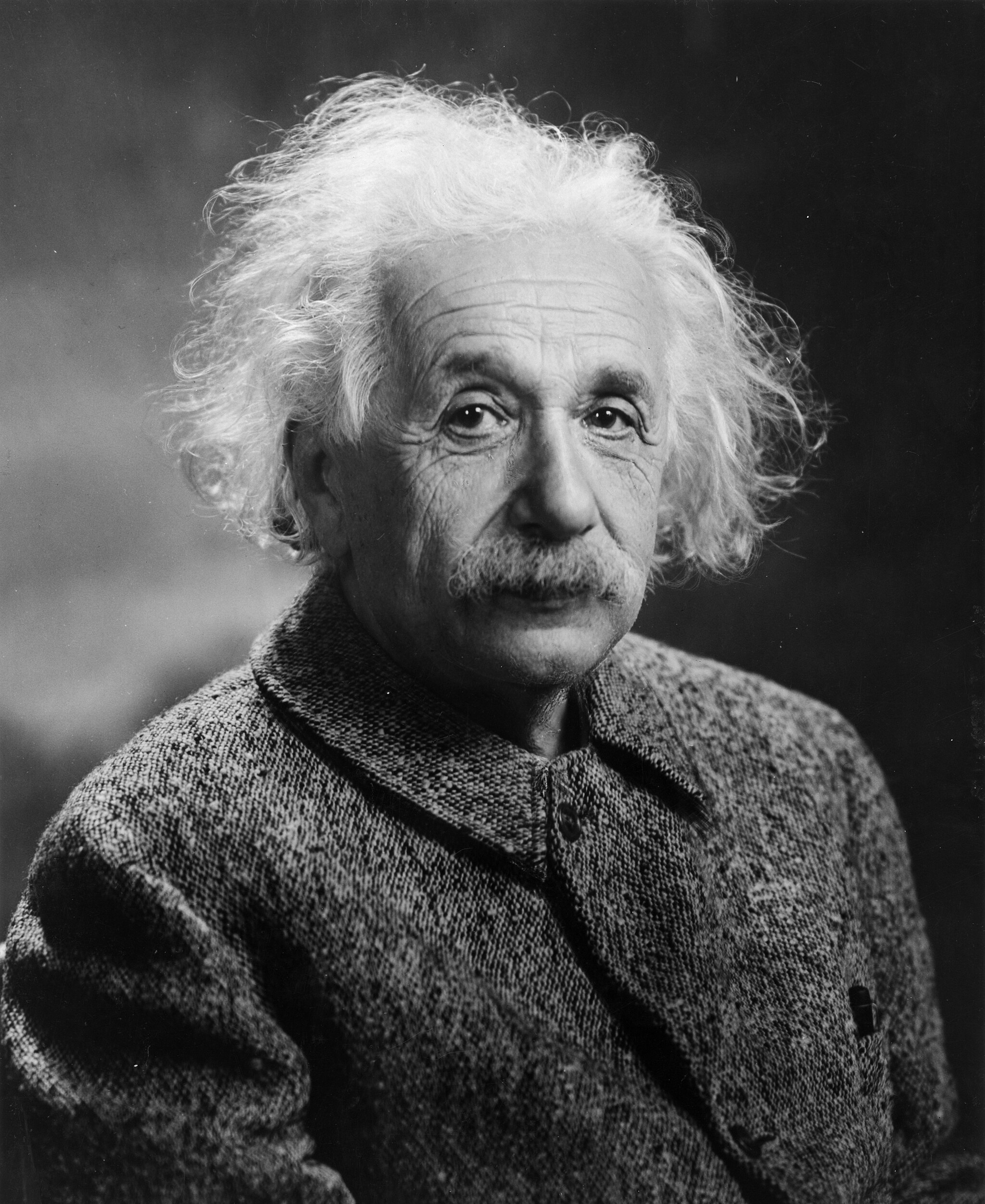 Albert Einstein (Credit: Oren Jack Turner, Princeton, N.J. (The Library of Congress) [Public domain] | Wikimedia Commons)
Albert Einstein (Credit: Oren Jack Turner, Princeton, N.J. (The Library of Congress) [Public domain] | Wikimedia Commons)
... I think it's generally held that Einstein was a brilliant mathematician. But if you actually read about his process, he did very simple mind experiments. After he got the insight, he struggled with the math. A couple times, he had to go back to one of his math professors and ask him for help. He knew he was right, he just didn't know how to mathematically prove it.
I think it's always a matter of imagination, not a matter of what you're talking about-the mechanics of It. So I think it always has to be an active imagination, with one exception-and it's a powerful exception. Sometimes you don't have to invent anything. All you have to do is look at things, but look at them through an eye of understanding. It's Ecclesiastes: "There is nothing new under the sun."
Brett Stern: Once you see these problems, how do you communicate that to actually get the invention then?
Gary K. Michelson: When I started out as a spine surgeon, we only did two operations. One was a decompression, where a piece of bone or a piece of disc is removed. The other thing we used to do was a weld job, where something's mechanically unstable. Your spine isn't a rod, it's an intercalated system of shock absorbers and blocks. So when the system goes bad, we take out the rubbery shock absorber and we weld together the two blocks. That's a fusion.
Those were the only two operations that spine surgeons did when I studied. So we either put people in body jackets or casts, put them in bed for six months, or put in some steel. We'd brace them together internally by using steel rods, or hooks, or plates, or screws, or something.
Now, along came things like pedicle screws, which were a potent form of internal stabilization, technically difficult to put in and requiring an even larger dissection. Adding pedicle screws, the fusion rates went up to about seventy-eight or eighty percent. Complication rates were higher than ever, and the complications were more severe. If you look at what we were doing, in essence, there were three separate procedures that took between five to eight hours of operation. So now you're asking me, how do you get the idea that there's something to be fixed? My first thought was, "Why don't we do them simultaneously?" If I said that to a spine surgeon, what do you think the response would be?
... I think it would be the same as my father's: "What are you? An idiot?" I've heard that in different ways and forms my entire inventing career. It gets to point that when people say that, you know you've really got it.
I think I have close to a thousand patents and something like three hundred or four hundred US patents. When people say to me, "You know what, you didn't really invent that. I thought of that." You'll be standing somewhere and somebody will walk up to you and say, "You know that thing you think you invented? You didn't invent it. I invented that." You hear that all the time. Initially, I used to have some internal reaction to that, but I realized what they're really saying: "I've now looked at what you've done, and it's so simple, I should have been able to think of that." So that's my thought.
Brett Stern: What do you think prevents people from doing it, if they have had the thought?
Gary K. Michelson: It's only simple after the fact, once you've seen it.
Brett Stern: What is your motivation to see these things, and go forward with them?
Gary K. Michelson:... When you're a surgeon, they call it a practice because you're getting better and better. You're supposed to be a black belt in spinal surgery. Hopefully, you're still learning something. Each time you help a patient, you should have a sense of achievement-a sense of having done something worthwhile. You say to yourself, "If I'm struggling with this problem, I better go ask somebody and not take an egotistical position like I'm the emperor who can't admit I don't know how to do this."
So you go to your colleagues and you say, "I am struggling with this problem. What do you do?" They all say, "I don't know. I have no answer." Now you know that whatever answer you come up with, if it works, they need the answer as much as you do.
Brett Stern: If the world always says "that's a crazy idea," how do you get the first person to say, "I'll try this thing.'?
Gary K. Michelson:... I never tried to be a salesperson. When I was doing spine surgery, we started putting plates on cervical fusions. That raised the fusion rate. That allowed a patient to get by without wearing a brace. But all the plates that I used had problems with them, and the problems were pretty obvious.
One day, a new plate came out. Sofamor Danek, which was one of the leading spine companies in the world at that time, made it. I wanted to talk to the engineer who was in charge of this plate. The guy gets on the phone, and I said to him, "Listen, I used your plate today. I have a list of its problems-and the solutions." I didn't just say, "Here are the problems." I said, "Here are the problems and here are the solutions." It seemed pretty easy to me.
The guy says to me, pretty much, "You're an idiot." He did not use those words because I was a doctor, but he pretty much said, "You're an idiot." He said, listen, you're only saying this because you have no idea what you're talking about. You're not an engineer and you don't know squat about squat. All these things are compromises. This is the best you can do because blah, blah, blah."
I say, "No, no, no." And he's getting annoyed and he finally says to me, "You know what, doctor? If you really think it's that easy, why don't you just do it yourself?" The reason that story is so interesting to me is that I had never in my entire life done that before. I had never taken something that already existed and thought, "I'm going to make a better one." I never did that.
Brett Stern: What do you think are the skill sets needed for an inventor to be successful?
Gary K. Michelson: Before we get to a skill set, let's get to personality or state of mind, or a way of thinking. You can't be rigid, where you're afraid of failing. Yogi Berra said, "You can observe a lot by just watching." You have to be able to see.
All the same things that Darwin observed were there for everybody else to see, but he saw them with a new eye of understanding. You have to give yourself permission to deconstruct things. I would say that's probably the number-one thing: you have to be able to take things apart. Like Einstein did, you can do it in your mind. You don't have to do it physically.
When you were saying,"You're not a biomechanical engineer." Well, in fact, one of the differences between me and most other physicians is that when I went to a company and showed them something, I was actually showing them the very thing they ended up making. It was already made. I had my own machine shop. It wasn't perfect. Usually, it was too complicated. But what happens is, if you allow the thing to talk to you, if you look at it with an open mind, it will teach you as you're using it.
... It really is the Einstein thing. You see it in your mind's eye. You've now taken apart all the pieces and sometimes you just have to throw it all away. This is the biggest struggle for people: overcoming this idea of functional fixity. Sometimes you can't get there from here. You can't leap a chasm in two small steps. So what you need to do is do something different. You just make a list of what you want. I want an instrument that simultaneously decompresses and fuses this segment. What do I not want? I don't want to injure the blood vessels. I don't want to injure the nerves. I want to minimize the blood loss. So you make up this list, and then you say, "How do I do this? What's the fewest number of pieces needed to do this?"
Brett Stern: Have you had any failures?
Gary K. Michelson: There's that Edison quote: "I have not failed. I've just found ten thousand ways that won't work." I don't remember having any kind of monumental failure. I had things that didn't do what I expected them to do, so I learned from that. It's an evolving education. You don't say you failed, because you're improving what you're doing. When I give something to somebody, I don't want him or her to be able to say, "Here's what you need to do to make it better." If they're right, they're right, but hopefully, I did that already.
... Now, as far as getting inspiration. I never had somebody say to me, "That sounds' like a great idea-go ahead and do it!" The only thing I ever got was the same one I got from my father: "You're an idiot."
I never got any positive, "Gee, that sounds like a great idea!" I don't remember having that. And I can tell you this about my first really successful invention, which is the thing I told you about where you get to do a decompression/fusion instrumentation as one procedure that takes forty-five minutes. The world's most preeminent spine surgeon inventor was a guy named Ralph Cloward. He invented things in the fifties that we were all doing from then up until the eighties, with nobody supplanting him, nobody coming up with a better way. So the things he had invented persisted for thirty years uncontested. And, of course, he was like a god. So when I was doing my spine fellowship and I was in practice, every time I had a chance to talk to him, meet with him, I always did.
When I came up with my first invention breakthrough, I put it all in a box-the instruments, the device, everything-and I sent it to him. I said, "Ralph, can you look at this? I need it back as soon as possible." A day goes by, weeks go by, and a month goes by. Finally, I pick up the phone, I get a hold of his secretary, and I said, "Can I talk to Dr. Cloward?" And he gets on the phone. I said, "So, Ralph, what did you think?"
... He replies, "Yeah. Don't be an idiot." These are the words he said to me and I'll never forget this: "What's goddamn wrong with you people? Why won't people just do the operation exactly the way I've taught them?"...
Brett Stern: What advice do you have for inventors out there then?
Gary K. Michelson: Well, first of all, I've got a friend who's a psychiatrist-he's not my psychiatrist, he's my friend-and he once said something. I responded, "Hey, that's great! That's really great!"... He said, "I don't want your praise."
I said, "Well, wait a second. It's not flattery-you actually did something. It's very neat and I was just saying to you, 'Great job!'"
He says, "Yeah, but I don't want that, because if you then think I did a bad job, I don't want to hear from you, 'Bad job!' I don't want you deciding for me if something is good or bad."
He was expressing it forthrightly, but it's correct. You have to decide inside yourself what's right and wrong. You have to believe in yourself. Don't expect the rest of the world to believe in you. If you're looking for them to tell you that-"Yes, this is a good idea. Go do it!"-you're wasting your time.
... Everybody's different, but everybody's got problems. If you're struggling with a problem in your ordinary life-it doesn't matter what, it could be your kid keeps spilling the Cheerios on the floor-so is the rest of the world. Your advantage is that you identify this as a problem and then you can ask how you solve this problem. Now, some people honestly don't have the imagination or the technical ability, and they're not going to do it. But other people will. So it all begins with one of two things, either asking the question or else simply observing something and seeing it in a different way than everybody else did, and say, "Here's what I can use that for, and here's what I can do with that."
Brett Stern: Do you have a definition of what invention is?
Gary K. Michelson: I think the patent office came up with a pretty good one. It has to be novel, which means it wasn't preexisting, because if it was preexisting you're not the inventor.' And it's supposed to be useful.
Brett Stern: Do you have a definition for innovation?
Gary K. Michelson: Innovation is creating something that did not exist before, and that's not obvious.
 Max Planck (Credit: Unknown Author [Public domain] | Wikimedia Commons)
Max Planck (Credit: Unknown Author [Public domain] | Wikimedia Commons)
Brett Stern: You've offered a lot of quotes, and I just pulled up one called Planck's dictum. Max Planck won a Nobel Prize in physics. He wrote:"A new scientific truth does not triumph by convincing its opponents and making them see the light, but rather because its opponents eventually die, and a new generation grows up that is familiar with it."
... Gary K. Michelson: You know the great quote by the industrial designer Raymond Loewy? Somebody accused him of being a stylist posing as an engineer... He said:"I sought excitement and taking chances. I was all ready to fail in order to achieve something large."You know, when there's a certain joy to what you do, and when you have this certain energy, that's what makes you happy. Doing those things made me happy. That was the real motivation: it made me happy...

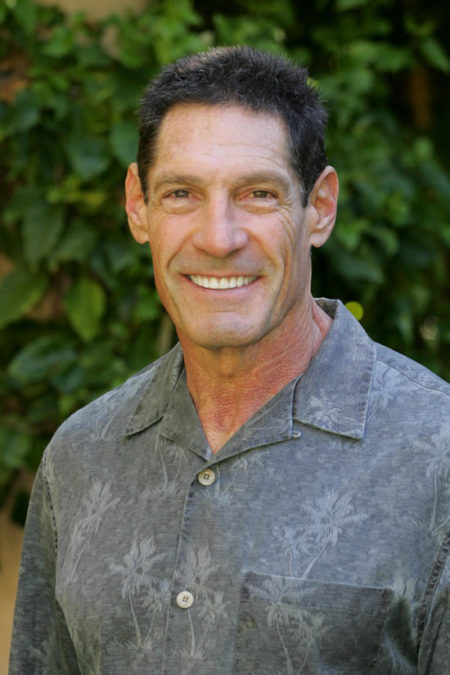
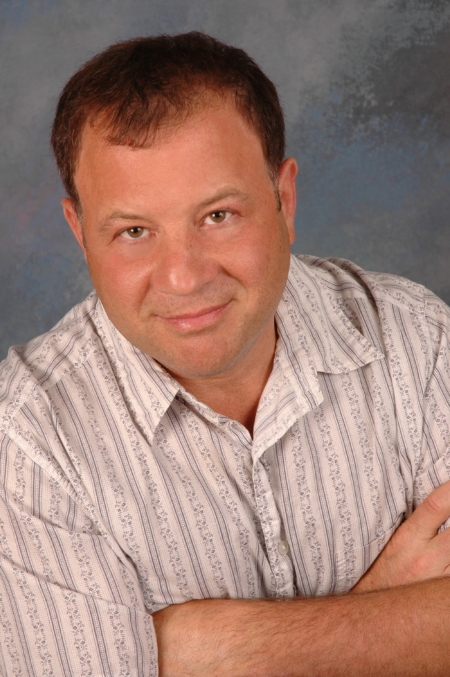



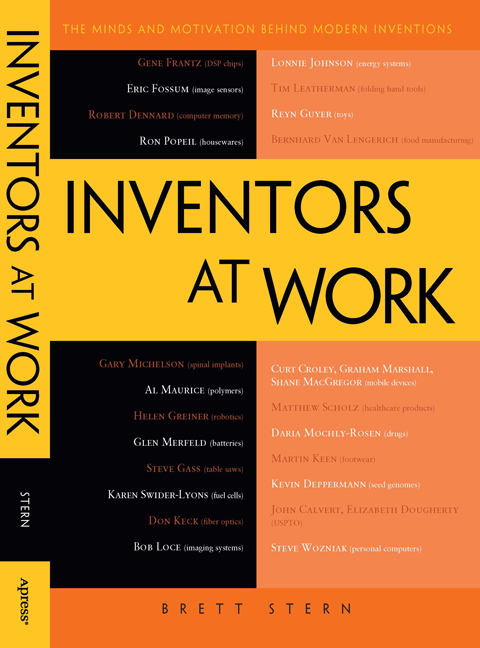
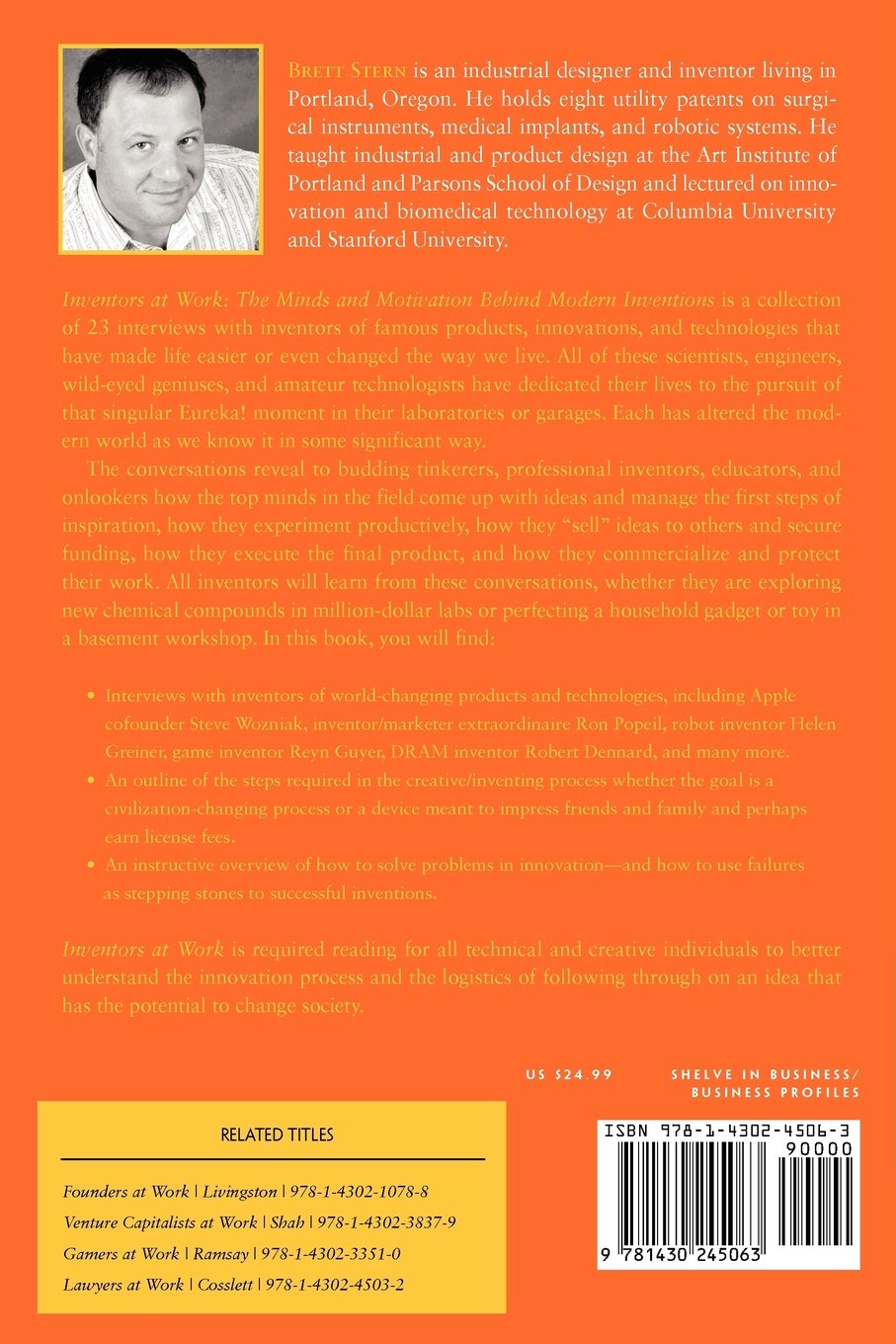
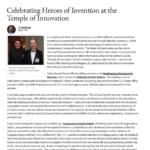 IP Watchdog
IP Watchdog IP Watchdog
IP Watchdog